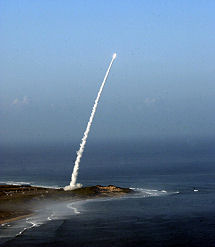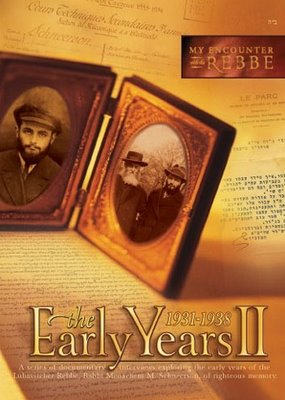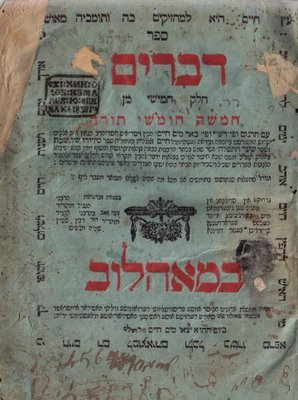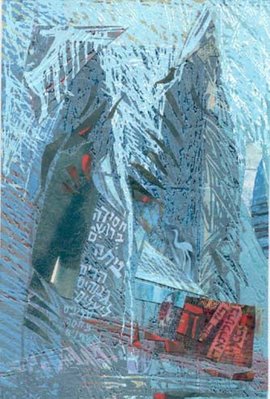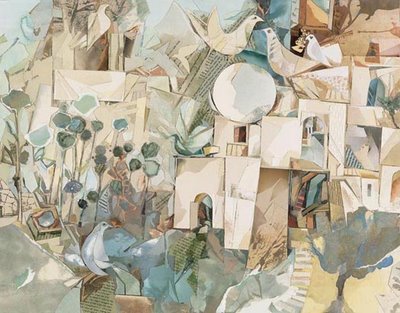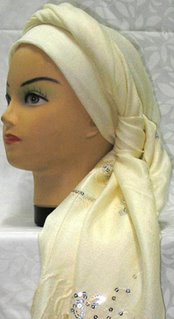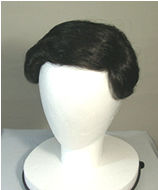A Simple Jew
אַשְׂכִּילָה בְּדֶרֶךְ תָּמִים
Thursday, November 30, 2006
A Random Thought About Apartments
 When I lived downtown in an apartment building that was built in the early 1930's, I wished that each room came with its own history book; a coffee table book that had a page about the room's previous residents. How fascinating it would have been to have a book with photographs of these people, information about their lives, and perhaps even a paragraph or two written that they wrote about any notable things that happened in the room.
When I lived downtown in an apartment building that was built in the early 1930's, I wished that each room came with its own history book; a coffee table book that had a page about the room's previous residents. How fascinating it would have been to have a book with photographs of these people, information about their lives, and perhaps even a paragraph or two written that they wrote about any notable things that happened in the room.
Wednesday, November 29, 2006
Guest Posting From Rabbi Dovid Sears - The Legacy of Avraham Avinu
Rav Elazar Mordechai Kenig, shlita, leader of the Tzefas Breslev community, has been visiting communities in greater New York this month. My family and I had the zechus of spending Shabbos Parshas Chayei Sarah with him in Lawrence, and must say that it was an unforgettable experience. As Rabbi Moshe Weinberger of Congregation Aish Kodesh of Woodmere self-effacingly said of the Rav, “We give shiurim on Rabbi Nachman’s teachings – but here is someone who truly personifies those teachings!” Both in his words and deeds – indeed, by his presence alone -- Rav Kenig radiates the serene light of Tzefas to all.
Rav Kenig gave over divrei Torah several times during the course of Shabbos. I will try to sum up what I remember of those talks. On Friday night before Kabbolas Shabbos, he spoke about Avraham Avinu’s legacy of chesed and the test that Eliezer put before Rivkah Emeinu, in order to determine if she was worthy to marry Yitzchak Avinu. When we encounter someone in need and compassionately perform an act of kindness, Rav Kenig explained, this is only natural. However, the avodah of chesed exemplified by our holy ancestors demands a higher level: we must seek further opportunities to give, in even greater measure. In so doing, like Avraham Avinu, we become extensions of Hashem’s chesed, which is truly limitless and unending. This quality was reflected by Rivkah Emeinu when she not only gave water to Eliezer, but even to his camels. And this is the level of divine service to which we aspire as descendants of Avraham who bear his “spiritual genes.”
Before Musaf, he pointed out a difference in the way Eliezer addressed Hashem before and after Rivkah Emeinu’s test. Initially he addressed Hashem as “Elokei HaShomayim, Lord of Heaven.” Only after Rivkah proved herself worthy of being Yitzchak’s kallah did Eliezer refer to Hashem as “Elokei HaShomayim vi’Ha’aretz, Lord of Heaven and Earth.”
Based on Likkutei Moharan II, 7, Rav Kenig offered a reason for this change of terminology. Hashem’s greatest desire is to perpetuate life in this world from generation to generation, and to transmit da’as until “the world will be filled with the knowledge of G-d like the water that covers the sea.” This is why Eliezer called Hashem “Lord of Heaven and Earth” only after the shidduch was consolidated. Now he felt assured that the legacy of his master would be passed on to the next generation.
Another facet of this concept is that shleimus, wholeness, is achieved only when the Infinite Light shines into the finite realm, illuminating the most ordinary, mundane realities of life. Then “heaven” and “earth” become one. This, too, was central to Avraham Avinu’s mission of communicating da’as – the recognition of Hashem – to all, even those who were steeped in idolatry.
During Shaloshudes, Rav Kenig darshaned on these themes from yet another perspective. In the same lesson from Likkutei Moharan, Rabbi Nachman asserts that the greatest act of compassion is to instill da’as in the world. Without da’as, we are but animals in human form; with da’as, we become bnei adam, true human beings, cognizant of the meaning and preciousness of life. However, the foundation of da’as is emunah, deep faith in Hashem’s Oneness and His dominion over all. This holy emunah enables us to recognize Hashem in all things, and to see that everything that happens reflects hashgochah protis, Divine Providence. We emulate Avraham Avinu’s example of bestowing this gift of da’as through studying and disseminating Torah.
At the public Melaveh Malkah in Cedarhurst, the Rav expounded on the concept of semichas ge’uloh l’tefilloh, connecting redemption to prayer. In the most simple sense, this refers to not interrupting between the brochah “Go’al Yisroel” and the Shemoneh Esreh prayer. However, in Rabbi Nachman’s drush, cited by Rav Kenig, this phrase alludes to redeeming prayer itself from the exile of being recited again and again without the degree of emunah that would awaken the mind and heart of the one reciting it. When we believe that Hashem is present in each and every moment and situation, and that He desires our prayers, we will surely say each word with intense kavanah.
The Rav also described the spiritual challenges of the recent Lebanon War and the need to remain resolute in emunah u’bitochon in the face of all threats. This is our most powerful weapon against our enemies – not our military might.
Rav Kenig’s visit surely made a deep impression on all who met him and heard his inspiring words. Another such “Tzefas Shabbos” is slated for this coming Shabbos, Parshas Vayeitzei (Dec. 1-2), in Flatbush. Davenning and Shabbos meals by prior arrangement will be held at the simchah hall of Young Israel of Avenue K, between East 28th-29th Streets. Rav Kenig will be receiving people for private interviews on the following Sunday, Dec. 3rd. To register or for more information, contact Rabbi Uzi Atia: 646-234-2473.
UPDATE: The organizers say that there is no more room for the Melaveh Malkah; however, the public is invited to all tefillos, Kiddush, and shaloshudes. More details are available in today's edition of the weekly Hamodiah. The Rav will be seeing people privately beginning tonight.
Without Water
One who davens without kavanah is like one who prepares mounds of sand, lime, and brick, but brings no water. How can they be expected to bind?
(Shpole Zeide)
Tuesday, November 28, 2006
Guest Posting From Chabakuk Elisha - Chumash
Lately I've been feeling religiously stale. The things that once inspired me didn't have the same umph; the sedorim that I try to keep, weren't inspiring me or stimulating me Jewishly. I haven't had much energy for delving into my learning. I haven't felt connected.
But something started to change - and it's funny, because there's no legitimate reason that I didn't do this earlier - it's called Chumash.
Yep, Chumash.
Gemmara is nice, but it does little for my Yiddishkeit. Chassidus is always beautiful, but lately I wasn't connecting with it for some reason. I "learned" Chumash & Rashi daily, and have done so for years (well, usually anyway), but most of the time I'd rush through it like a water skier skimming the surface, without really looking around the page to see what the underling issues were. Sure, we constantly hear or see insights, and contemplate them, but I seldom took an analytical approach passuk by passuk to try to get a fuller experience - until now that is. Maybe I'm the only one who has been sitting in the dark all these years, but it seems like the Malbim or Ramban, Ohr HaChaim, Baal HaTurim, Klei Yakkar & Ibn Ezra were virtually hiding from me on the pages; of course, I always knew they were there, and I even glanced at them once in a while, but I never sat down and tried to delve into them systematically. Well, I started to, and you know what? I found what I've been missing.
We often fall into a trap - we rethink or reexamine less and less as we get older. The ideas we picked in school are often not updated or analyzed again, and so they remain that way for life - as a result, we can maintain a child's understanding of Chumash, sometimes forever. This is a true tragedy and a stifling of the human spirit. If we don't update and reexamine, trying to better understand things, than it would seem that we relegate ourselves to a decidedly superficial existence. Incidentally, this is what attracts me to Chassidus; it was never the movement (as I am not a movement person), nor was it for the socially benefits (since we can find a social circle anywhere) - it was predominantly that from sifrei Chassidus I found that I was encouraged, and taught, to think.
It's funny, because I mentioned this to our friend A Simple Jew and he sent me this quote by Rabbi Yaakov Kamenetzky that really sums it up nicely - and I couldn't agree more:
"One of the greatest tragedies of intellectual human experience is that we study Torah stories when we are 55 in the same manner as we studied them when we were 5."
It always gets me looks, but for years I have been saying that the chinuch our yeshivos offer really does our sons a disservice. There is no curriculum - who would ever think that a single subject curriculum makes sense? If it was up to me, I would close the Gemmaros a little and redefine the goal. Our Yeshivos don't attempt to educate, they attempt to provide skills (not even all that successfully either), but is that Yiddishkeit? I would like my kids to really understand Chumash; I'd like them to learn seforim like the Kuzari and really understand what we believe; how can we raise inspired serious Jews if these things are neglected?
So this is my new goal: Back to basics, I hope to really begin to learn Chumash now.
According To The Needs Of the Generation
The Torah is expounded upon in every generation according to the needs of the individual generation and according to the shoreshei neshomos of the generation. Hashem illuminates the eyes of the chachomim of the generation with these new explanations.
(Degel Machaneh Ephraim)
Monday, November 27, 2006
Question & Answer With Neil Harris Of Modern Uberdox - Different Paths In Serving Hashem
A Simple Jew asks:
How has your background as a Litvak influenced you in terms of your choice of seforim that you learn and your general outlook on Yiddishkeit?
Neil Harris from Modern Uberdox answers:
My background as a Litvak (and I admit, I dislike most labels, with the exception of “Torah observant”) is really a label by genealogical association. My great-great-great grandfather was originally from Lithuania. As the first Torah Observant Jew of my family in, at least, three generations, I consider myself a Litvak.
I’ve been taught that the neshamah naturally gravitates towards Torah and Mitzvos. It’s how we are created. Environmental factors (where/how we are brought up or the traditions, if any, of our parents ) might block our natural flow towards Yiddishkeit, but the spark is there. Most people have found memories of the place where they grow up. When traveling to a new city, I always smile when I see something familiar like a particular bank chain, drug store, or a 7-11. It’s a landmark that I can reference. This reflects our neshmah’s recognition of Hashem and his Torah. Our neshamah connects to Torah.
I think that as someone who’s relatives came from Lithuania, I have over the years gravitated towards more towards the study of mussar than anything else. While becoming frum I was exposed the writings of Rabbi Aryeh Kaplan zt’l, who’s knowledge and love of chassidus, and specifically Reb Nachman also has had an impact on me, but it’s not as noticeable within my personality. Not like mussar. While an understanding of Halacha is key of any Torah observant Jew, there is something about mussar seforim that resonates in me. From the time I first read the introduction to Messilas Yesharim I was hooked. I found that the sefer spoke to me in a way that other works hadn’t before. My mind was opened up to an entire system of ethical perfection that completely clicked with what I had studied in psychology classes. For me, the search for wholeness brought me to mussar.
My general outlook on Yiddishkeit most probably stems from the emphasis on emes within mussar, when ultimately stems from Torah. For me, the vehicle for emes is the Litvish tradition of mussar. No one group or sub-culture with Torah Judaism holds the copyright on emes. Torah is emes and the emes is Torah. They are one.
Each shevet had its’ own flag and individual identity, yet together formed National Achdus. Each shevet also had their own nusach of tefillah, yet Hashem accepts all of the tefillos of klal Yisrael. My desire to grow as a Jews and display an attitude of respect and tolerance for others is expressed through my willingness to read and learn from various sources. As children of an ‘orphaned generation’, as expressed in Eyes to See by Rav Yom Tov Schwartz, we must strive to reclaim a sense of Achdus, tolerance, and Kiddush Hashem regardless of our background.
Misnagdim and Chassidim
The Misnagdim say that the main thing is to study Torah. The Chassidim say the main thing is prayer. But I say: Pray and study and pray.
(Rebbe Nachman of Breslov)
Friday, November 24, 2006
Guest Posting From Rabbi Dovid Sears - A Biblical Generation Gap
When Yaakov Avinu disguises himself in his brother Esav’s garments to receive his father’s blessings, Yitzchak Avinu exclaims, “Behold, the smell of my son is like the smell of a field that Hashem has blessed!” (Bereishis 27:27). Only then does he bestow his blessings. What is the connection between the field and the blessings?
There are several connections with this narrative and the paradigm of the field. First of all, Esav is described as an ish sadeh, “man of the field” (Bereishis 25:27). Yitzchak, too, is associated with the field, because it was his custom to pray in the fields, as the meforshim state in connection with Yitzchak’s first meeting with his future wife, Rivkah (Rashi, Malbim, et al., on Bereishis 24:63: “And Yitzchak went out to supplicate in the field…”). This suggests that there is a special spiritual affinity between Yitzchak and Esav -- despite the fact that the father was a tzaddik and the son an evildoer. Both are connected to the field and the outdoors, whereas Yaakov is described as “a simple man, dwelling in tents” (Bereishis 25:27). This may be why Yitzchak favored Esav: perhaps it was easier for him to understand another “man of the field” and to see him as his successor.
However, as soon as Esav shows up, and Yitzchak realizes that he had been tricked into blessing Yaakov, he utters a second exclamation reaffirming the blessings he gave Yaakov. Why did he suddenly reverse himself in Yaakov’s favor, instead of siding with Esav?
Rabbi Nachman of Breslev discusses the differences between Yaakov and the other Avos HaKedoshim in Likkutei Moharan I, 10 (section 3). Citing the Gemara (Pesachim 88a), he states that Avraham called the future site of the Holy Temple a “mountain,” because this conformed to his mode of divine service; Avraham related to Hashem as the ultimate transcendent One God above all other powers. Yitzchak called the same place a “field,” because he was able to bring down the Divine Light a little closer to the ordinary things of this world. However, Yaakov called it a “house,” because he was able to reveal Godliness even on the most mundane level.
Because of these three distinct types of avodah, each of the Avos seems unlike the others. However, despite this apparent difference, they represent three stages in one process, three parts of one whole. This is borne out by the rest of the biblical narrative, which tells how Yaakov’s children, the Bnei Yisrael, became the sole bearers of the monotheistic legacy of all three Avos, ultimately teaching it to the rest of the world.
Yet when one is in the middle of a process, it is hard to understand what is really going on. Therefore, it was unclear to Yitzchak Avinu that the son who would bear his torch was not Esav, the “man of the field” like himself, but the son who seemed so different than both himself and his iconoclastic father, Avraham: the “dweller in tents,” Yaakov.
Yaakov’s very name alludes to his divine mission. “Yaakov” is related to ‘ekev, the heel of the foot, because it would be the task of Yaakov and his descendants to draw down the divine light to the lowest level symbolized by the heel, thus bringing the world to perfection (see Likkutei Halakhos, Minchah 7:89, et passim). This is why, upon realizing that Yaakov had tricked him in obtaining the precious blessings, his father exclaimed, “And indeed he shall be blessed!” (Bereishis 27:33). At that moment, he understood that his mission would be fulfilled through the son who represented the next stage in the process of revelation: Yaakov, who would soon receive his prophetic vision on the site of the future Temple, and whose descendants would build the “house of prayer for all nations” (Isaiah 56:7). Yaakov and the Bnei Yisrael would complete the work of Avraham and Yitzchak.
This sudden flash of insight deserved an exclamation. A new light had begun to shine in the world, from the least expected source – a higher light than the world had ever known! In such a state of hislahavus, it was possible for Yitzchak Avinu to reaffirm the blessing that he had given in his blindness, fixing it as the legacy of Yaakov and his descendants forever.
Thursday, November 23, 2006
Wednesday, November 22, 2006
"Wearing A Sheitel Was Senseless"
Neshama commenting on Sheitel vs. Shterntichel
To all concerned:
"...it is the way of kosher Jewish daughters that they are nauseated by strange men placing a covetous eye upon them." (Seridei Eish)
Is this ever the truth.
The Baal Shem Tov's wife and daughter, I'm sure, was a full tzenuah. Her wearing a kerchief was the way of a Bas Yisrael then and now.
This is one source: From the incident of the Sotah. The Torah tells us that her head is to be uncovered [in shame], from which Chazal have learned out that the Jewish married woman normally covered her hair.
There are many sources. But the fact is that this is a "natural inborn feeling of the Bas Yisrael". There is a movement in Eretz HaKodesh to awaken the natural Jewish chein buried under many a glamorous sheitel (and less then Tznius clothing) walking around Israel.
Sarah Imeinu was an immensely tzanua woman and covered her beauty with a shawl over the head and shoulders. Rivka Imeinu covered her innocence with a veil over the face. There are many instances of such modesty through our generations.
Do you realize that Jewish and non-Jewish WOMEN covered their hair up until WWI and from then until WWII it was all downhill with clothing. I know some won't see it that way and will object strongly. But this is true.
No one is brave enough to say this. The sheitels many women wear today are better than their own hair, make them look like Paris models, Bloomies catalog models. The Jewish woman has a regal, royal neshomah. The folly of this golus's Yetzer has grabbed on to the sensitive Jewish Bas Yisrael. It is a situation of immense sensitivity I realize, but it must be brought out in the open.
Married women need to move UP in their level of observance in the Eyes of Hashem and wear a cloth covering of whatever style they decide on (because there are varying styles), and they would then look in appearance as a married woman, a modest woman, a Royal Jewish Bas Yisrael. Hashem created the human neshoma to be housed in our brains, and when a Jewish married woman covered her own hair (not a sheitel) with a covering, she is acknowledging the supremacy of her neshoma. Once she will take upon herself to do this, some have experienced amazing things.
This is a subject dear to my heart. I determined a while ago that wearing a sheitel was senseless (to wear a non-Jewish woman's hair); it did not make me look more Jewish or modest. I always felt strange in one. And I objected to the commercialism and profiteering of the business of providing European non-Jewish women's hair for our own Royal Bas Yisrael. I don't mind discussing this with anyone who wants to discuss it further.
'Tis The Season For This Problem
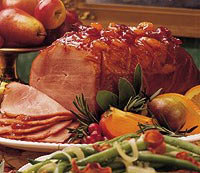
Scenario:
Your office has just scheduled a Christmas party on a Friday in December at a nearby upscale non-kosher restaurant during working hours and it is assumed all will attend. A collection of funds is taken up beforehand to cover the cost of the meal as well as a going-away present for a departing employee.
Question:
What do you do?
a. Go and wear a baseball cap over your yarmulke.
b. Go with your yarmulke on.
c. Tell your co-workers that you are uncomfortable attending, but contribute your share.
d. Contribute your share and call in sick on the day of the event.
Sheitel vs. Shterntichel
Rivka K. commenting on A Toupee As A Yarmulke:
I personally would think that a man would still need to wear a yarmulke, but I remember that Rabbi Moshe Feinstein zt"l once answered a question on this in Igros Moshe and very reluctantly permitted a man only to wear a toupee without an accompanying yarmulke.
If a woman wears a beautiful sheitel that causes men to look at her instead wearing of snood she is technically fulfilling the mitzva of Kisui HaRosh but not the intent (that is why I wear a snood).
The Lubavitcher Rebbe wrote in a sicha on Rosh Chodesh Elul 5714 that:
"When a Jewish woman walks in the street without a sheitel there is no (discernible) difference between her and others. However, when she wears a sheitel one can tell that here is a Jewish religious woman."
Sometimes I cannot distinguish between a good sheitel and real hair. However, I always know a snood when I see one!!
Finally, I have read that the Lubavitcher Rebbe was against women wearing kerchiefs. Yet, on page 60 of Me'ir Einei Yisrael it says that the Baal Shem Tov's wife Sarah wore a "Sherntichel" - a decorated kerchief.
How do you explain this one?? I don't think anyone would claim that the Baal Shem Tov's wife was not frum enough!
UPDATE (Related):
Mishmar: Rav Shlomo Zalman Auerbach on (Certain) Sheitels
A Gift From Rebbe Nachman

Received via e-mail from The Breslov Center:
A Gift From Rebbe Nachman
Rebbe Nachman states that by giving tzedakah to a tzaddik, one can correct the vices of evil speech and arrogance, and their derivative traits
(Likkutei Moharan I, 4:8). Both sets of evil traits lead to poverty. However, by giving tzedakah to a tzaddik one will be protected from such undesirable qualities, and the poverty they bring in their wake.
The Rav of Tcherin, who was the leading thinker of the third generation of Breslov Chassidus, adds that we can still accomplish this tikkun by giving tzedakah to increase the dissemination of Rebbe Nachman's teachings.
Founded ten years ago by Rav Elazar Mordechai Kenig , shlita, leader of the Breslov community in Tzefat, The Breslov Center for Spirituality and Inner Growth is the only such outreach center under the guidance of Gedolei Breslov in America .
We can't make the same claim in Eretz Yisrael, but we have recently opened a branch of The Breslov Center for English-speakers in Yerushalayim.
The Breslov Center sponsors weekly classes in several communities in greater New York, another weekly class in Jerusalem, plus special lectures in various locations, Melaveh Malkas, Shabbatons, all-day seminars ("A Day With Rebbe Nachman"), Chassidic music events, weekly hisbodedus outings, and a multi-faceted website with an online library of essays and translations and an audio shiurim center.
Soon we hope to expand into the realm of publishing, with several works-in-progress, including "Naturally Breslov " (a Breslov cook book) and a compilation of Breslov customs, spiritual practices, and oral histories. Both will be "firsts" in Breslov history.
However, we have a volunteer office staff, volunteer teachers, no fund raising apparatus, and no budget for advertising. Therefore, we feel like we are driving a Jaguar that is running on one piston!
If Rebbe Nachman has touched your heart, and all the more so, if he has changed your life for the better -- express your appreciation, and help us to bring his uniquely inspiring teachings to the world.
Rebbe Nachman said: "Whenever I receive, I am actually giving!"
Please do us all a favor, and give generously to Rebbe Nachman by supporting the Breslov Center.
Contributions are tax-deductible, and can be mailed to:
The Breslov Center
5014 Sixteenth Ave, Suite 263
Brooklyn, NY 11204
Scrutiny
A person must satisfy the scrutiny of human beings just as he must satisfy Hashem.
(Talmud - Shekalim 9a)
Tuesday, November 21, 2006
My Favorite Niggun - Kumi Roni
During my blogging vacation, my friend Chaim posted links to Yosef Karduner videos. Included among them is my favorite niggun; Kumi Roni.
My four year-old daughter was standing next to me the first time I watched this video on the computer and she immediately started singing along. She instantly recognized this niggun since I sing it at the Shabbos table every week. Nevertheless, I was still amazed how it was ingrained in her mind and how much it was a part of her.
It Is Not Good To Be Management
A position of eminence shortens the days of a person's life.
(Talmud Yerushalmi - Berachos 11a)
Monday, November 20, 2006
Right Above My Head
They have always been there my entire life. I have looked up the sky at them. I have looked out the window of a plane at them. In school, I even learned about the different types and the details of how they make rain. I learned how they could be classified as Cumulus, Cumulonimbus, Stratus, Stratocumulus, Altocumulus, Altostratus, Nimbostratus, Cirrus, Cirrocumulus, or Cirrostratus.
But despite this knowledge, it has taken me almost 34 years to fully appreciate clouds. In retrospect, I realize that the cold and analytical outlook taught to me in science class robbed me of the ability to appreciate their simple beauty. I agree with Henry David Thoreau, who wrote, "What sort of science is that which enriches the understanding, but robs the imagination?"
Perhaps I can credit my friend Mottel for reawakening me to the beauty of clouds by taking stunning pictures of the sky. Along with Space Cadet, I now stare upwards each day in awe; entranced by their form and beauty.
"I Haven't Had The Time"

Excerpt from The Empty Chair:
From his window facing the marketplace Rebbe Nachman spotted one of his followers rushing by.
"Have you looked up at the sky this morning?" the Rebbe asked.
"No, Rebbe, I haven't had the time."
"Believe me, in fifty years everything you see here today will be gone. There will be another fair--with other horses, other wagons, different people. I won't be here then and neither will you. So what's so important that you don't have time to look at the sky?!"
Friday, November 03, 2006
Remembering Mr. J
The 20th of Cheshvan is the yahrzeit Mr. J. Although he was not a religious person, Mr. J was a wonderful man who taught me a lot of about Jewish history and culture when I was young and totally ignorant of these things. I am certain that whenever I do a mitzvah today, he shares in the merit.
Below is a paper that I wrote when I was in school back in the 1980's:
A PERSON I WILL NEVER FORGET
The person I will never forget is Mr. J., who lives across the street from my grandparent's house and is a good friend of ours. When I was little I used to call him Uncle Sid because I thought he was my uncle. Not until a few years ago did I learn he wasn't really my uncle but just a good friend of our family.
The reason I won't forget Mr. J is because he's always so friendly. Today he still shows me little magic tricks like he showed me when I was little. Mr. J. owns an antique store in Philadelphia. He never went to college but he knows more than most people I know. He knows a lot about subjects I'm interested in and we talk a lot about them. He has two sons and a daughter. Today his children are older and working at jobs. His two sons are doctors and his daughter is a lawyer. He loves to play golf. When you go upstairs in his house you feel like you are in a museum because of all the antiques. Some of his antiques are over two hundred years old.
I have liked Mr. J since I was little. I think it would be hard to forget somebody you really like.
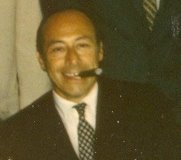 Mr. J.
Mr. J.Zelig ben Shmuel z"l
(Picture taken at my parents wedding in 1969)
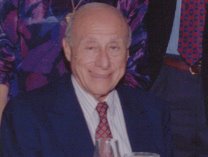 30 years later
30 years later(Picture taken at my wedding 20 days before he passed away in 1999)
Lottery Tickets
According to Jewish law, lottery tickets are permissible, because they're not the losses of another person. Nevertheless, purchasing lottery tickets isn't 100% congruent with the spirit of emuna.
If a person does desire to purchase a lottery ticket, he or she should purchase a single ticket only; if Hashem wants them to win the lottery prize, He'll arrange that their ticket bears the winning number. One who purchases multiple lottery tickets show that he or she trusts statistics or enhanced chances, and not in Hashem.
(Rabbi Shalom Arush)
Thursday, November 02, 2006
Guest Posting From Rabbi Dovid Sears - What Did Moshe Rabbeinu See in the 'Erev Rav?
"Lekh reyd, ki shiches 'amkha -- Go down, for your people has acted corruptly!" Hashem commands Moshe Rabbeinu when the 'Erev Rav (Mixed Multitude) perpetrated the sin of the Golden Calf.
The ARI zal sees in Hashem's words a special connection between Moshe Rabbeinu and the 'Erev Rav: they contained some of his "holy sparks," which he knew he had to elevate (see Rabbi Chaim Vital, Likkutei HaSHaS). But what was so special about those "sparks" that Moshe took such an enormous risk at this spiritual high point in our history -- which, if not for the sin of the Golden Calf, would have become the Ge'ulah Sheleimah /Final Redemption?
The Zohar has much to say about the nature of the 'Erev Rav, identifying it with the "zuhamas ha-nachash," the corruption of the Snake in the Garden of Eden, which it transmitted to Chavah (Zohar I, 28b). It also predicts that in the period before the advent of the Moshiach, the souls of the 'Erev Rav will return as false leaders of the Jewish people, to our great misfortune (Zohar I, 25a). (Maybe this is one of the reasons why Rabbi Nachman warns us so adamantly about the danger of false leaders, even in the religious community.) In general, the Zohar attributes most of the troubles of our long and bitter exile to the influence of the souls of the 'Erev Rav in every generation.
So again, we can't help but wonder: why did Moshe Rabbeinu take the risk of bringing them into the fold?
Rav Moshe Cordovero (RaMaK) answers this question in a surprising way. He explains that the Torah was given in seventy languages so that the 'Erev Rav, who spoke these seventy languages, would in turn purify the seventy original nations of the world. Thus, the future prophecy would be fulfilled "And I will convert the nations to a pure speech, by which they shall all call upon the Name of Hashem..." (Zephaniah 3:9). If the Jewish people had been on a high enough level of consciousness, says the RaMaK, the 'Erev Rav would have been transformed from klippah to kedushah, from evil to good, and become the leaders of all humanity in a perfected world. The Jewish people would have attained their lofty destiny in Eretz Yisrael, while the 'Erev Rav would have served as leaders in all of the surrounding lands, and all humanity would have recognized and served Hashem in brotherhood and harmony (Ohr Yakar on Zohar, Vayakhel).
Alas, we were not yet worthy of all this, and the entire spiritual edifice that Moshe Rabbeinu had built came tumbling down like a house of cards. We lost our lofty madreigah and the "crowns" we had received at Mount Sinai, while the souls of the 'Erev Rav remained sunken in tumah, and continued to thwart Klal Yisrael at every turn throughout history.
But Moshe Rabbeinu's hope was not a total loss. The final birur of the 'Erev Rav is taking place in these cataclysmic times, as the evil of the nations speeds toward inevitable destruction, and the good of the nations comes to the aid of the Jewish people, in fulfillment of the prophecy, "Ten men from each language of the nations shall take hold of the corner of the garment of a Jewish man, saying 'Let us go with you, for we have heard that Hashem is with you..." (Zechariah 8:23) (Ohr Yakar, Raya Mehemna, Shaar II, 25:15).
Then we will be zocheh to truly worthy leadership, as it states "And your eyes shall behold your teacher!" (Yeshaya 30:20).
A Simple Jew asks:
In recent times, I have heard people who disagree with the policies and actions of the Israeli government label certain Knesset members as belonging to the Eirev Rav. While according to the reference in the Zohar that you quoted above this may be the case, how are we to know for sure?
In his Mishneh Torah, Issurei Bi'ah 19:17, the Rambam wrote: "When a person always slurs the lineage of others, casting aspersions on the ancestry of families or individuals, claiming that they are mamzerim, we are suspicious that he himself is a mamzer." Similarly, if we cast aspersions and claim that a Knesset member's lineage descends from the Eirev Rav aren't we calling into question our own lineage?
Rabbi Dovid Sears answers:
Just like we can't render halakhic rulings straight out of the Gemara, we also can't figure out kabbalistic mysteries such as which neshamos are from the 'Erev Rav and which aren't straight out of the Zohar. Kabbalistic thinkers in certain anti-Zionist communities might bring numerous statements of the Zohar to support this idea -- but Russian, Ukrainian, and Polish Chassidim generally did not take this approach (nor did Rav Kook and his school of thought, needless to say).
Many authorities feel that most of us today are in the category of "tinuk she-nishba," and that the mumar le-hachis of earlier generations (whom the Zohar explicitly identifies with the 'Erev Rav) was a different breed than the secular Jew of Tel Aviv or Wesport, Conn.
I must admit that I'm inclined to think that Jewish political leaders who actively make war against religious Jews and try to expunge every last vestige of Yiddishkeit in Eretz Yisrael are very likely among those infamous neshamos of the 'Erev Rav.
But then again, I have read that Rav Chaim Sonnenfeld chastised one of his talmidim for saying "yemach shemo" after mentioning the virulently anti-religious Ben Yehudah's name, and that Rav Zvi Yehudah Kook tried to be mekarev Shulamit Aloni!
The bottom line is that it is our first responsibility to eradicate the klippah of the 'Erev Rav and the zuhamas ha-nachash within ourselves, by purging ourselves of arrogance, materialism, coarse sensuality, and disrespect for tzaddikim and Jews who are more religious than we are. Maybe if we ever succeed in draining the existential swamp that covers up the fugitive spark of Divinity within us, we will then be able to recognize "who's who" in the World of Souls!
Degel Machaneh Ephraim Audio Shiur - Lech Lecha
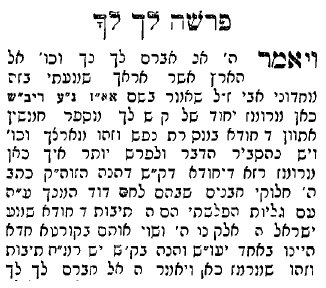 You can listen to Rabbi Tal Zwecker's new audio shiur on Degel Machaneh Ephraim, Parshas Lech Lecha by copying and pasting the link below in your address bar of your browser or into Realplayer or Windows Media Player:
You can listen to Rabbi Tal Zwecker's new audio shiur on Degel Machaneh Ephraim, Parshas Lech Lecha by copying and pasting the link below in your address bar of your browser or into Realplayer or Windows Media Player:mms://yeshivalive.net/noam/DegelLechLecha.mp3
This shiur is approximately one hour long and contains three divrei Torah.
Lineage Of Suspect
We operate under the presumption that all families are of acceptable lineage and it is permitted to marry their descendants as an initial and preferred option. Nevertheless, if you see two families continuously quarrelling with each other, you see one family that is always involved with strife and controversy, or you see a person who frequently quarrels with people at large and is very insolent, we suspect their lineage. It is fitting to distance oneself from such people for these are disqualifying characteristics.
(Mishneh Torah, Issurei Bi'ah 19:17)
Wednesday, November 01, 2006
New Free Online Book - "The Essential Rabbi Nachman"
Received via e-mail from Azamra.org:
In honor of the Yahrzeit of RACHEL IMMENU (11 Marcheshvan / 2 November) -- AZAMRA is unveiling our newest FREE ONLINE BOOK, "The Essential Rabbi Nachman", the largest online collection of the translated sayings, teachings, parables and stories of this outstanding Chassidic sage, mystic and visionary, whose message of faith, hope, courage, simplicity and joy is essential to each one of us and essential to the whole world.
You can read the entire book FREE online here.
The print edition of this new book will be out very soon.
Update On Audio Torah Shiurim
Received via e-mail from Rabbi Tal Zwecker:
Many more great shiurim at http://www.virtualyeshiva.com
Sundays:
1:00 pm EST, [NEW TIME!] "Chassidus on the Parsha," Rabbi Tal Moshe's stories, parables and teachings from Classical Sources on Chassidus including Noam Elimelech, Baal Shem Tov, Meor Eynaim, Kedushas Levi and many more, in the "Torah Chat" Room. 1 hour.
2:00 pm EST, [NEW TIME!] "Jewish and Chassidic Meditation," based on classics, Rabbi Avraham Maimonides son of Rambam, Piaseczna Aish Kodesh, Noam Elimelech, and the Chassidic Siddur Tefillah Yeshara (with the commentary of Keser Nehora and others) are presented by Rabbi Tal Moshe, in the "Torah Chat" Room. 1 hour.
Thursdays:
3:00 pm EST, [NEW CLASS!] "Hands-On Talmud for Beginners," Rabbi Tal Moshe's introduction to the Tractates with classic commentaries of Rashi, Tosfos and others, with emphasis on learning the Talmud Daf inside. Class assumes beginners Hebrew reading skills, but no previous familiarity of Talmud or Halacha is needed, in the "Torah Chat" Room. 1 hour.


